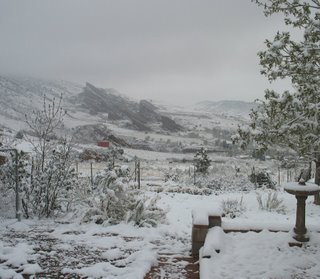When we first got chickens (back in 1996), I knew we’d be getting better acquainted with local predators. I just didn’t know which threats would prove the biggest challenge. We used to have lots of skunks, for example—but they seemed to get along fine with the chickens, even developed a taste for the feed, alas. We still occasionally smell skunk around or under the coop, but they have not been a threat. Raccoons, foxes, no problem. We’re too far from water for regular raccoon sightings, and foxes have rarely put in an appearance.
Knock on wood.April is the time of our annual visits from predators, so this month always makes me nervous. It’s spring, everyone’s either got babies to feed or is looking forward to having babies to feed. It’s a hungry time of year, I understand that. I also get that we’ve become members of the local ecosystem and have to pay our dues. So today’s chat is a bit grim, but not gruesome, I promise. I won’t inflict the entire reality on you.
The first deadly visits we had were a surprise—they came from the air. Chickens are very alert to anything that moves in the air, and will give the alarm whether the object in question is a pigeon, or hawk, or airplane. (They are a wonderful aid to bird-watching: as soon as I hear this special sound, I look up and am usually rewarded.) A small hawk perching nearby, as
Artemis does, makes them nervous but doesn’t unduly alarm them. Perhaps they know somehow that she’s after smaller game.
In the early years, the chickens used to have the run of most of the open front yard. That changed in April 2001, when one of the local
golden eagles discovered them. One night we came up short on the evening “beak count.” It snowed, though, so it was a day or two before it melted off and we found the evidence. We couldn’t be home all day, and the eagle returned about weekly for awhile. I think we lost about 4 chickens in all. We finally got smarter, and built a new fence to confine the chickens in a smaller space that had more tree and shrub cover. Eagles can’t maneuver well in tight spaces.

Barred rocks are one of our favorite breeds. The hens are sweet, friendly, productive, and hardy—you can’t ask for more. This is what a barred rock looks like after an eagle is done with her. (Note there’s a live barred-rock rooster in the background.) Very tidy: no body, not even a speck of blood.

This neat circle of feathers is, by the way, a prime way to tell a bird kill from a carcass killed by a mammal, as the latter usually don’t bother to pluck their prey. If they do, they pull the feathers out in mouthfuls, so you generally find clumps stuck together by saliva. Given time by my absence, the eagle carefully plucked each kill, presumably ate at leisure, and carried off the remains of the meal. Back to the babies.
The difficult times are when you hear the alarm and, roused by continued squawking, run outside to see what’s the matter. That, of course, spooks the eagle, who promptly takes off. You’re left with a dying bird, and the eagle still has to find lunch elsewhere. That’s a no-win situation. Much cleaner if you can muster the restraint to stay inside until it’s all over.

 On Sunday it was 80 degrees; I actually considered putting on shorts, got a little sunburn. By Monday night, I was worried whether my lilacs would survive. This is what they looked like Tuesday morning.
On Sunday it was 80 degrees; I actually considered putting on shorts, got a little sunburn. By Monday night, I was worried whether my lilacs would survive. This is what they looked like Tuesday morning.
 Just a few spots of white stuff left-- It's as if the world has gone from black-and-white to color!
Just a few spots of white stuff left-- It's as if the world has gone from black-and-white to color!

 Barred rocks are one of our favorite breeds. The hens are sweet, friendly, productive, and hardy—you can’t ask for more. This is what a barred rock looks like after an eagle is done with her. (Note there’s a live barred-rock rooster in the background.) Very tidy: no body, not even a speck of blood.
Barred rocks are one of our favorite breeds. The hens are sweet, friendly, productive, and hardy—you can’t ask for more. This is what a barred rock looks like after an eagle is done with her. (Note there’s a live barred-rock rooster in the background.) Very tidy: no body, not even a speck of blood.  This neat circle of feathers is, by the way, a prime way to tell a bird kill from a carcass killed by a mammal, as the latter usually don’t bother to pluck their prey. If they do, they pull the feathers out in mouthfuls, so you generally find clumps stuck together by saliva. Given time by my absence, the eagle carefully plucked each kill, presumably ate at leisure, and carried off the remains of the meal. Back to the babies.
This neat circle of feathers is, by the way, a prime way to tell a bird kill from a carcass killed by a mammal, as the latter usually don’t bother to pluck their prey. If they do, they pull the feathers out in mouthfuls, so you generally find clumps stuck together by saliva. Given time by my absence, the eagle carefully plucked each kill, presumably ate at leisure, and carried off the remains of the meal. Back to the babies.